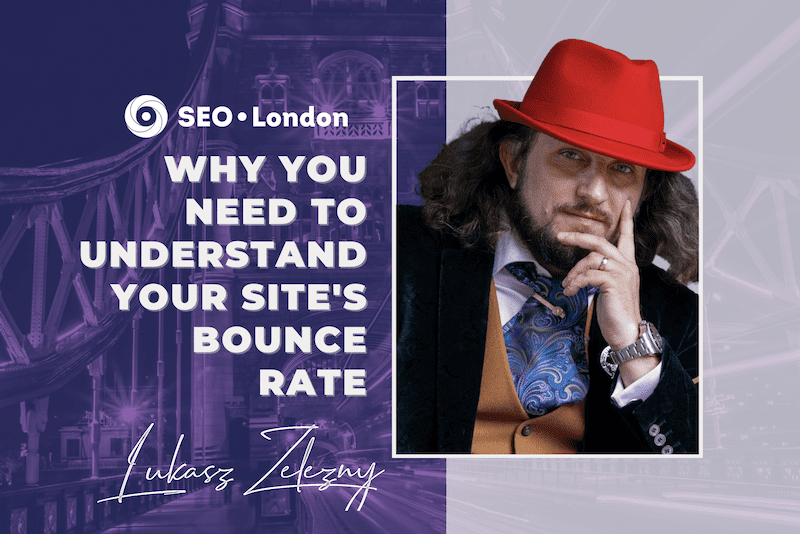If you’ve ever been to a website and looked at the number of people who “bounced” off it before they could do anything, for example, buy something from that site or even just read what’s being sold on that particular site, then you know what bounce rate is.
Your website’s bounce rate is the percentage of single-page visits. This metric measures how many visitors to your site leave after viewing only one page, without following any links or engaging with content. It can be a valuable indicator of the quality and relevance of your site content, as well as the user experience on your website.
What Is A Bounce Rate And How Does It Work
A bounce rate is the percentage of visitors to your site who navigate away from it without visiting any other pages. For example, if someone comes to your blog page and then leaves instantly (within less than one minute), that would be considered a bounced visitor “bounce.”
When you look at your site’s analytics, there are several metrics that can help measure the quality of traffic to your website. Bounce rate is one metric to consider when evaluating how much value a given audience member provides.
A high bounce rate can indicate several things:
– Visitors aren’t interested in what they find on your website.
– There’s something wrong with how you’re presenting content.
– Traffic sources are of poor quality.
How To Improve Your Site’s Bounce Rates
Write Quality Content With Valuable Information.
Google wants to deliver the best results for its users, so they actually reward sites that have low bounce rates – in other words, websites where people spend time on what you offer and do not leave quickly. A good way to get your visitors engaged is by giving them answers to their questions or doubts through well-written articles, full of useful tips or resources that are relevant to them! It’s all about making an impression on your readers
Set Up Good Template For Your Website
Make sure to set up a good template for your website when you first launch or update an existing one. If there are multiple elements that make it difficult to read through articles in a blink of an eye they’re going to leave quickly. A great design should be intuitive enough so readers do not have any problems finding what they need right away but also engage them into wanting more from time to time (i.e.: subscribe).
To Get People’s Attention, Use Graphics & Video Elements.
The sad truth is that most people are exposed to hundreds, if not thousands of ads each day and they will simply ignore them without even thinking about it unless you make an impression using emotional triggers or humour! Be creative but be careful not to overdo it with the amount of graphics because this may actually cause visitors to leave your site instead of sticking around for more information.
Implement Call To Actions In Every Post
Especially when trying to get readers to subscribe for example! You can have a signup form within articles so users know exactly where they should look when wanting more from you (i.e.: newsletter).
Common reasons for high bounce rates
– Poor content that doesn’t match visitor’s search intent.
– Website might not have what visitors are looking for.
– Design is hard to navigate or uses unnecessary elements.
– Landing pages don’t provide the right sign up option or download link, if relevant. If there isn’t a clear next step in your process, you’ll fail to engage new users and keep them coming back for more! For example: if someone lands on an e-commerce product page but can only add it to their cart without being able to click “buy now” then they may get frustrated & leave .
– people often won’t stay long enough for bounce rates to be calculated. This could happen because of slow internet connection speed (especially common with mobile devices). If your site takes too long to load, you’ll lose customers.
– no matter what industry you’re in or who your target audience is, chances are high that they have a short attention span these days and won’t stick around if the page doesn’t engage them quickly enough.
– Poor design choices can make visitors feel confused about where they should go next. Sometimes people even leave because of an error message that isn’t helping them find what they need! Nowadays websites need to be easy for anyone & everyone to use so it’s important not just for users but also search engines which depend on relevant content being easily accessible by all.
– website might not be mobile-friendly or has a slow loading time due to heavy images/videos.
Is High Bounce Rate A Bad Thing?
No, it isn’t. It is a fact that many people do not stay on a web page for a long time and this can be normal in some cases. However, you should keep an eye on your bounce rate to know how engaging your content really is.
It depends on what type of business you have because a high bounce rate doesn’t necessarily mean bad performance. If you run sales through paid traffic then having high bounce rates will cost more money than gain profit since all ads clicks are charged regardless if visitors stayed on pages or left-right away leading to a number of wasted clicks and money.
Common Misconceptions About Bouncing From A Website
– It’s a sign of low-quality content.
– You need to focus more on the design of your website instead of the bounce rate.
– It’s a sign of low traffic to your website.
– You can increase the bounce rate by adding more ads on the webpage.
Conclusion
A high bounce rate is not necessarily a bad thing. It just means that your site’s visitors are looking for something specific and don’t find it on the first visit to your page.
The good news? You have an opportunity to engage them with content they’re interested in by adjusting what you offer or how you present information, so take this as a chance to improve your marketing strategy!
 Published in: September 2021
Published in: September 2021
Last Updated in 2022-12-28T10:21:32+00:00 by Lukasz Zelezny



